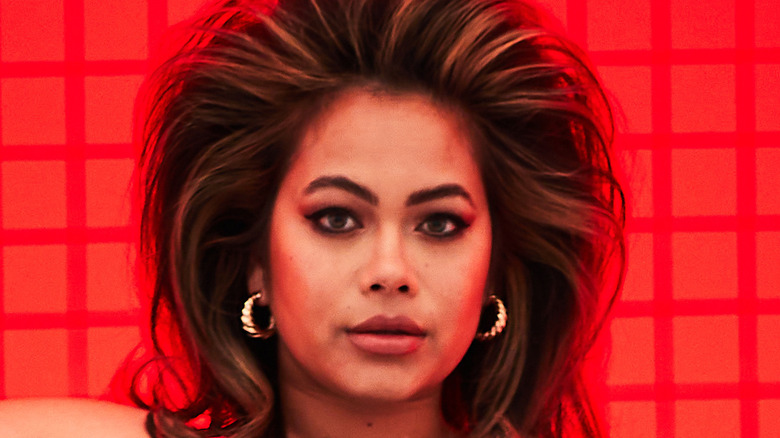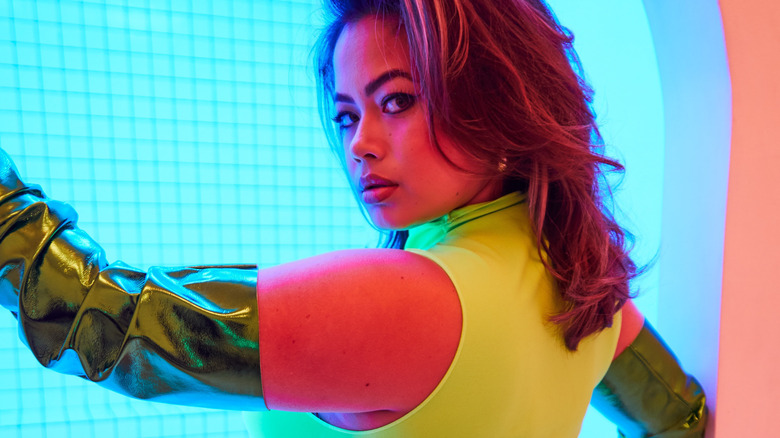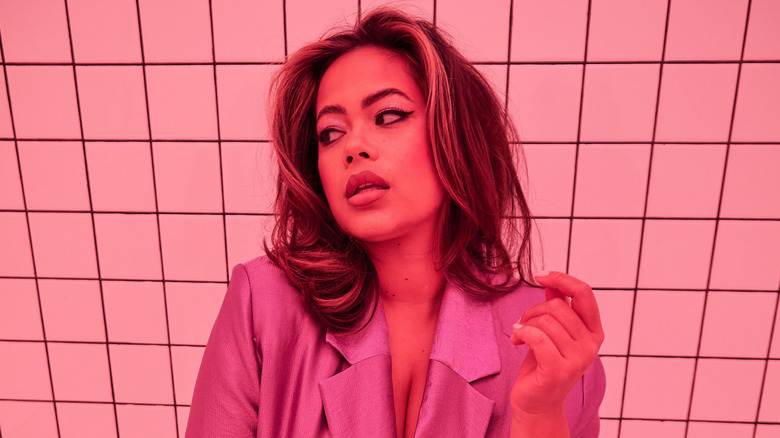Plus-Size Model And Designer Catie Li Talks Size Inclusivity In The Fashion Industry - Exclusive
Catie Li — a Chinese American plus-size model, fashion designer, and influencer — is grateful that the fashion industry is finally giving plus-size women the attention they deserve, but she also believes that the industry needs to do a lot more work to be size-inclusive. She's been modeling for about nine years now, and though progress has been made, Li still feels like a lot of brands treat her and other plus-size models like they're only at a shoot to check a diversity box.
Often, she's the only plus-size model on set. Sometimes, she even has to bring her own clothes because the wardrobe department doesn't have anything that will fit her. And more than a few times, Li has "been put in a lot of situations where I felt uncomfortable."
To Li, the wildest part of the lack of representation in the fashion industry is that the average woman looks like her, not the thinner models that surround her at every photoshoot. Yet they're barely represented — and women larger than her, of which there are millions in the U.S., aren't represented at all. In an exclusive interview with our sister site Health Digest, Li explained why size inclusivity is so important and how the fashion industry can do better.
Size-exclusive fashion and media
Catie Li didn't grow up seeing people like her — plus-size, Asian, and biracial — in magazines, on television, or in movies, and the lack of representation made a huge impact on her. She internalized the message that her body wasn't right because it didn't look like the ones she saw. Li thinks the only way to counteract that message is to give plus-size bodies the same attention thin bodies have been getting for decades.
"The more that children — and even us — see [body diversity], the more it will change our mindset about it, and we can be comfortable," Li insisted. She said that the fashion industry exacerbates the problem by dictating what kinds of clothes are sold in stores and which sizes are available.
"My mom would take me to the Misses department, and she would say, 'This is where you need to find your jeans and stuff.' It was traumatizing," Li revealed. "I was really hurt by it. I wanted to shop at Limited Too and Justice, and I could not fit there at all." Yet again, she got the message that all plus-size girls get — that their bodies are literally too big to be fashionable.
What size-inclusive fashion looks like
To fix the fashion industry's size-inclusivity problem, Catie Li thinks the industry has to change the way they interact with the plus-size market. She pointed out that companies aren't paying attention to the kinds of clothes plus-size women actually want to wear.
"They didn't do any research on what we wanted [or] any research about fit," she said. "Then they pushed something out. It was ugly, and then they had to close their stores down because nobody was buying it."
She also said that the way that many clothing companies expand their sizes doesn't actually work for plus-size women. "For a lot of fast fashion ... they're going to their vendors that they're getting, from downtown LA, and they're saying, 'Can you add three inches? Just keep adding three inches.' That's all they're doing," Li explained. "They're not actually putting it on people."
Li insisted that if the fashion industry really wants to be size-inclusive, not just say they're size-inclusive, it needs to focus on the things that matter to plus-size women. Focus on how the clothes fit and look on bigger bodies; don't just add inches to the pattern. Make trendy clothes, not Misses department clothes. Just treat plus-size women like they matter as much as thinner women.
For more updates on Catie Li's work, you can follow her on Instagram.


